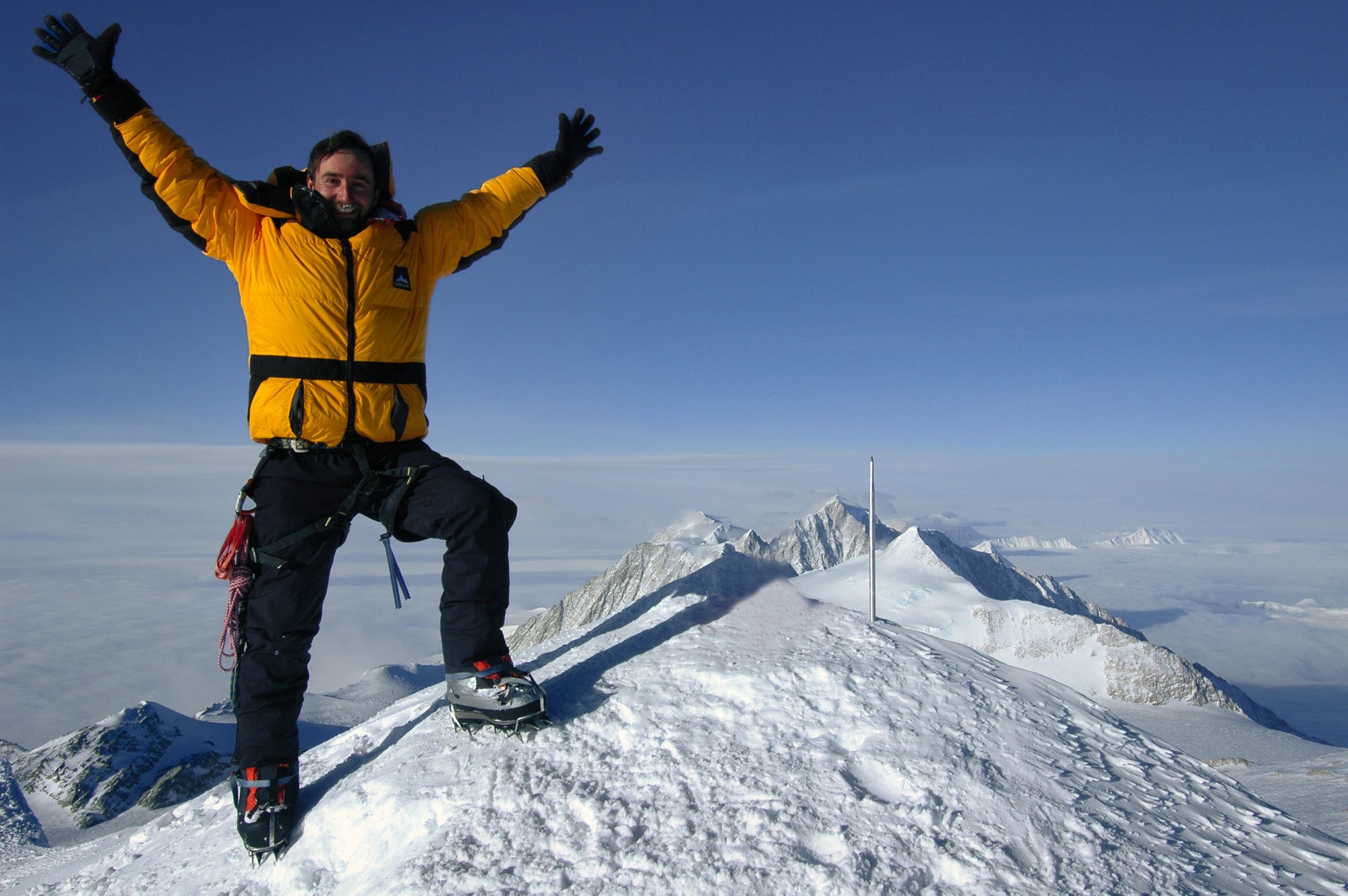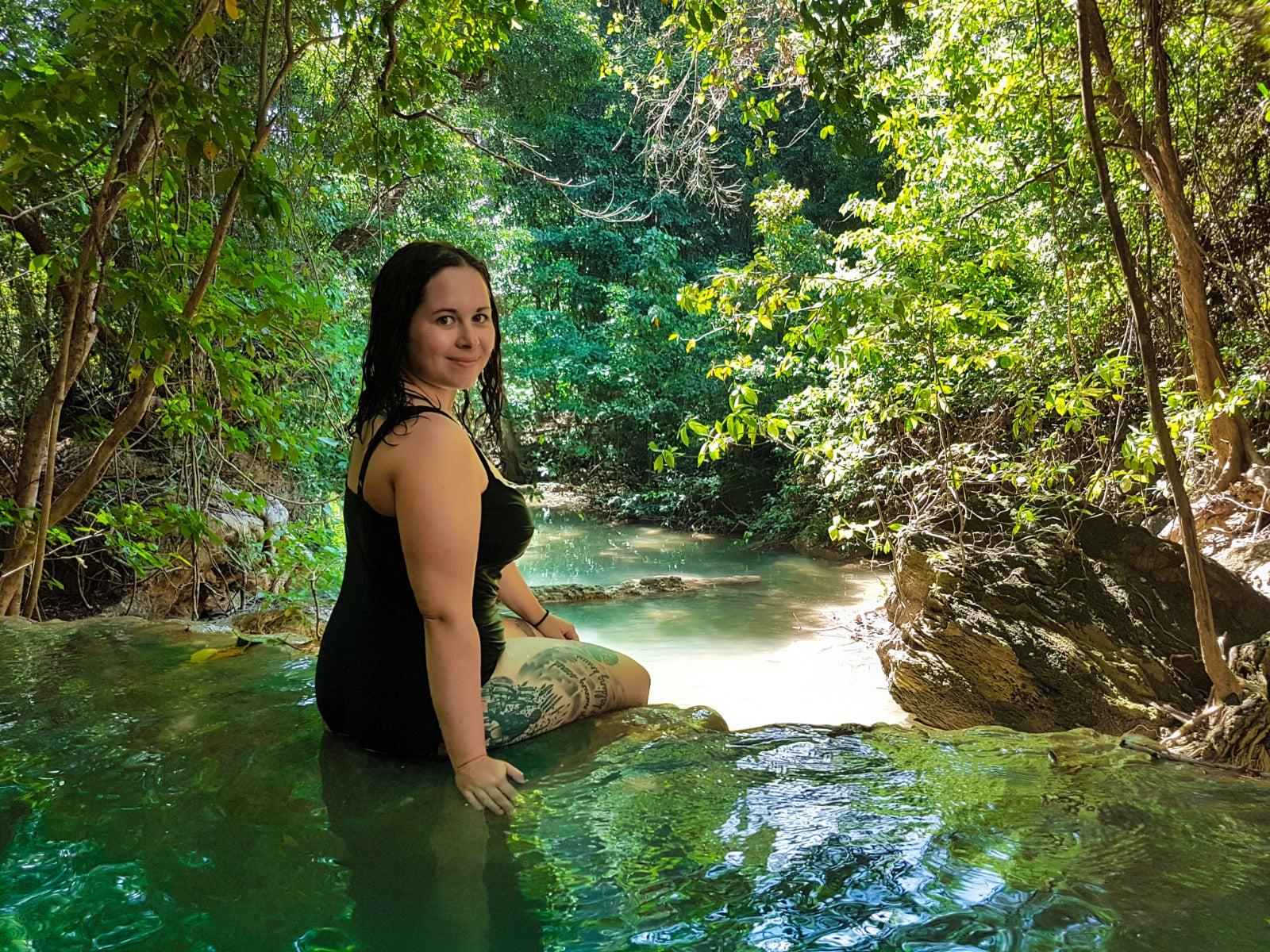Julia: Hello Stefan! It's great that you're here online today and are telling us about your greatest adventure so far.
First of all, it would be great if you could briefly introduce yourself. Who are you and what do you do?
My name is Stefan Gatt, I studied sports science in Vienna and then developed very strongly in the psychological direction, I attended many further training courses and then gave seminars for teams and managers myself. I then discovered my love for experience-oriented learning methods and offered many training courses. This was followed by my training as a couples therapist, during which I noticed that I can also apply this in a professional context, since in the end life is always about interpersonal relationships. Before Corona I lived 90% from seminars and 10% from photography, work at heights and mountain tours. In the meantime, this has shifted to individual coaching, via ferrata repairs and mountain tours.
And that's how I came across REELOQ. I discovered REELOQ on the Dachstein with a customer and immediately thought "that's a good idea!"
Julia: What does adventure mean to you in everyday life and how important is adventure to you?
For me, adventure is the opposite of routine. And if I now say "I hate routine", then it's immediately clear what I love! I love a challenge, the new, the unfamiliar, and I also like being in control of difficult situations.
So adventure is very important to me in my life, especially adventure in nature. I enjoy the silence, the beauty and the solitude that awaits you in nature.
Julia: And what has been your greatest adventure so far?
Due to the size of the mountain, one of my biggest adventures was my Mount Everest expedition in 2001. I took a snowboard with me as an additional challenge. This was a custom built, very light board, but still something you don't normally take on an 8k tour. Because this is a border crossing anyway, especially if you do the tour without oxygen. During this tour, the air pressure is reduced to about a third and the oxygen particles in the air are only 20% of sea level. This contributes to a power reduction of 90%.
Of course I prepared well for that. 1,000 meters in altitude in less than an hour were no problem for me at the time (as a guideline: well-conditioned hikers are said to be able to climb around 400 meters in altitude per hour). That meant I could only climb 100 meters on Everest in an hour and still pant like a marathon runner. And as deep, strong and fast as possible in order to bring the little oxygen into the body. At the time, I had a resting heart rate of under 40 at home and on Everest it was consistently between 80 and 90. In addition to the lack of oxygen, there was also the unbelievable cold. At that time it was -50 degrees at night and -32 degrees during the day.
For the participants in our expedition, I turned to self-reliant mountaineers so that I could only work there as a consultant and coach. That worked great and the ascent went well, which is why I actually took the snowboard with me and on May 22, 2001 I was the first person to reach Mount Everest with a snowboard. Of course, some photos were taken at the summit.

After that, my partner Theo Fritsche began his descent. I carefully strapped my snowboard on so it wouldn't slip down Everest.On the way up, I imagined what a great descent I was in for, because there weren't even any tracks yet. But there wasn't any untracked powder in the summit region because the snow was frozen hard. Partly a steepness of 45 degrees awaited me - so no descent where I could have allowed myself to make mistakes.

However, I can still remember the moment when I stood in my snowboard and rode down the first waves. It was really a unique feeling that I was the first person to make the first tracks with a snowboard in the snow. On the slopes above 8,000m I was always panting in the snow after two turns, because in just a few seconds I had built up so much oxygen debt in my legs that my thighs were blue. So I slowly worked my way down and was basically twice as slow as if I had just walked.
At an altitude of 8,700m, I then planned to turn left into the Norton Couloir, where I could have skied up to 7,000m without unbuckling. However, my gut feeling told me that this would not be a good idea. Internally, my head and my stomach then began to debate against each other. Because on the left side in the Norton Couloir there were several gullies as entry points, but only one of them was passable. The others would have all ended in a rock fall. After another 10 minutes of panting in the snow, I asked myself the following question: "What happens if you make a mistake?". I then realized that in this case it would only turn out 50% well for me, otherwise I would die if I made a mistake. That risk was just too high for me. So I made a swing to the right. I carefully climbed out of the binding into the crampons, strapped my snowboard to my back and descended mostly on foot to the last camp up to 8,200hm to spend the night there. The next day we continued snowboarding. From 7,600m I was about as fast as on foot and from 7,000m twice as fast. Then it paid off in terms of speed! 😊

All in all, I was on the road for this adventure for 50 days, 30 days of which was acclimatization time, 2.5 days we climbed to the summit and 1.5 days I needed for the descent and descent.
Julia: How long have you been preparing for this adventure?
On one level, I always say "all my life", because of course a lot of old behavioral patterns are recalled without penetrating consciousness. On the other hand, for 2.5 years with a focus on leg extension training, plus I stopped climbing a year before because I knew that any muscle mass in the upper body was an unnecessary burden for the expedition. Logically, I had very fit legs at the time, so my jeans didn't fit me anymore.
Julia: Do you have a wide view from up there or is everything covered by clouds?
Yes, you can see more than 1,000km from the top. Luckily we had dream weather back then, as predicted by Karl Gabl . You even saw the curvature of the earth up there, it was really impressive! The sky up there is no longer blue, but black like the night. I could see over Tibet, Nepal and India. It was definitely worth the climb.

Julia: Which moment on this trip do you remember most?
A special moment happened at the pre-summit, 50 meters before the summit.I had a very formative thought "Stefan, now you have half an hour to enjoy the last few meters to the summit" After that I gratefully enjoyed every step towards the summit. Normally you always rush to the summit, enjoy the view for a moment and then descend again. This adventure was different.
While telling the story, I also notice that I'm touched because it was simply a gift and a great opportunity for me. I am also extremely grateful that my wife encouraged and supported me in this.

Julia: What 3 key takeaways would you give other adventurers?
#1 A few meters before the summit, realize that you're almost there.
This is how you really immerse yourself in the moment and enjoy the last few steps much more consciously and gratefully. Realize that you have a fit body that can climb mountains. This also applies metaphorically to other peaks in life, make yourself aware of how lucky you are.
#2 If you are really ready to stand up for your goal, you can achieve a lot in life.
In this way, the impossible is often made possible.
#3 Ultimately, it's the people that count in life.
… and not the peaks or achievements in life. For example, my wife and children are the most important to me.




